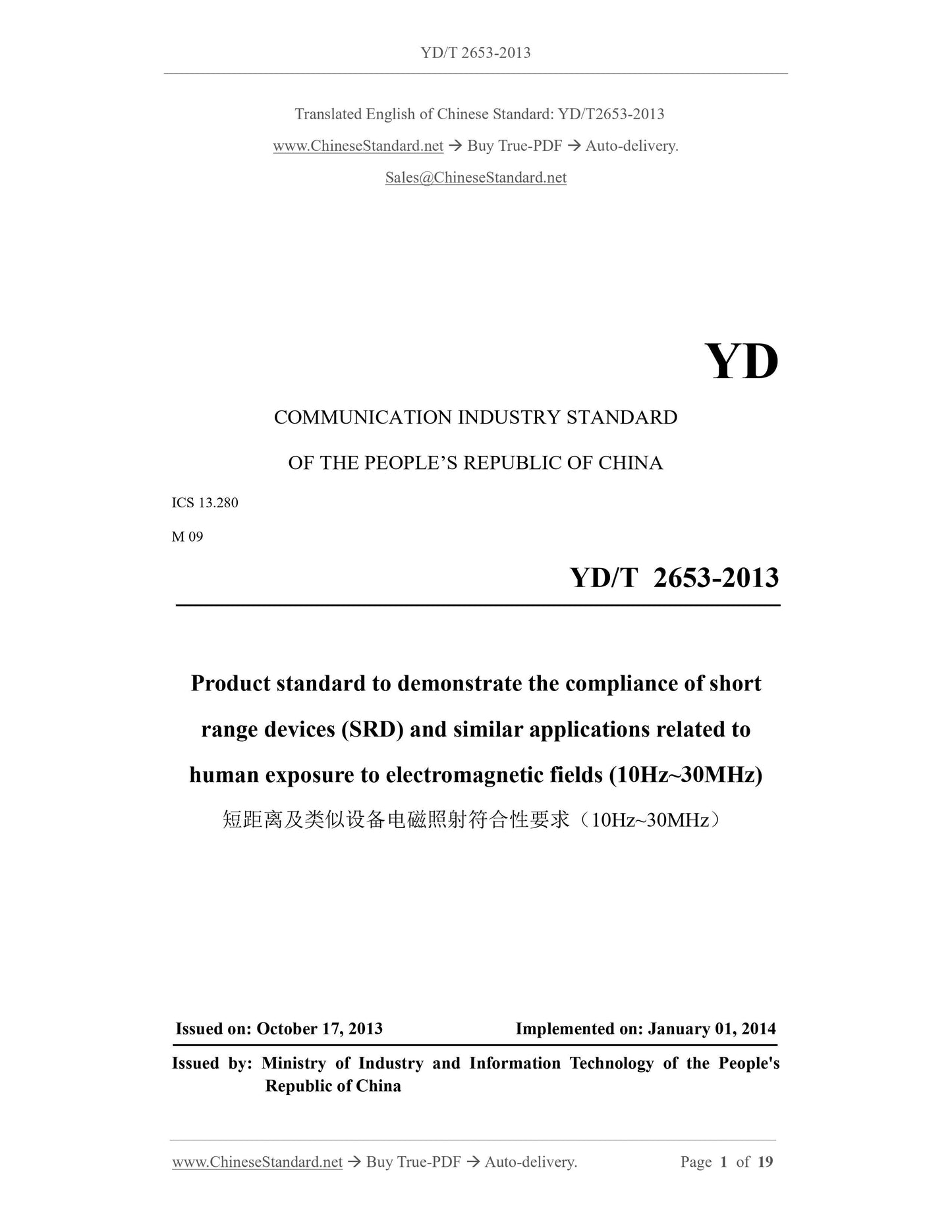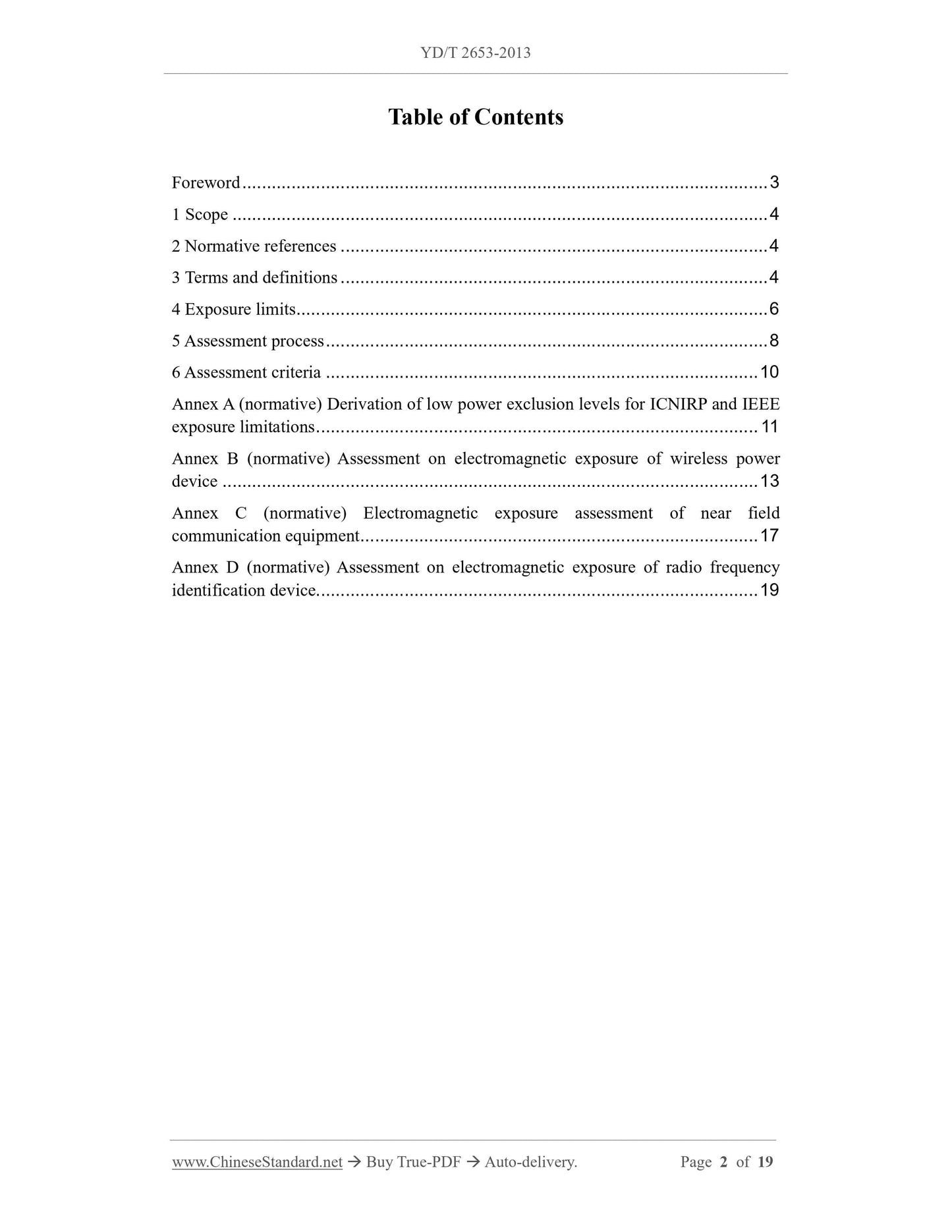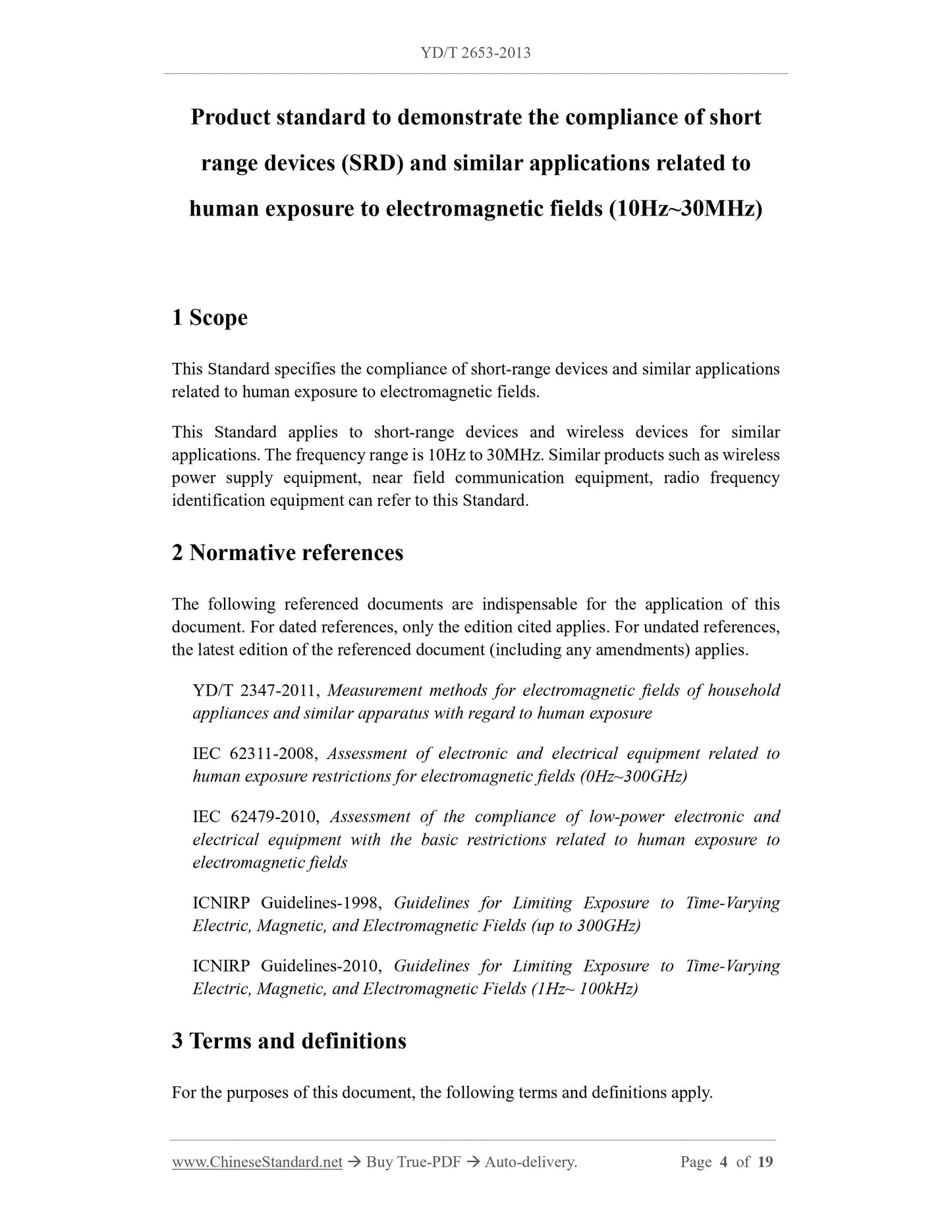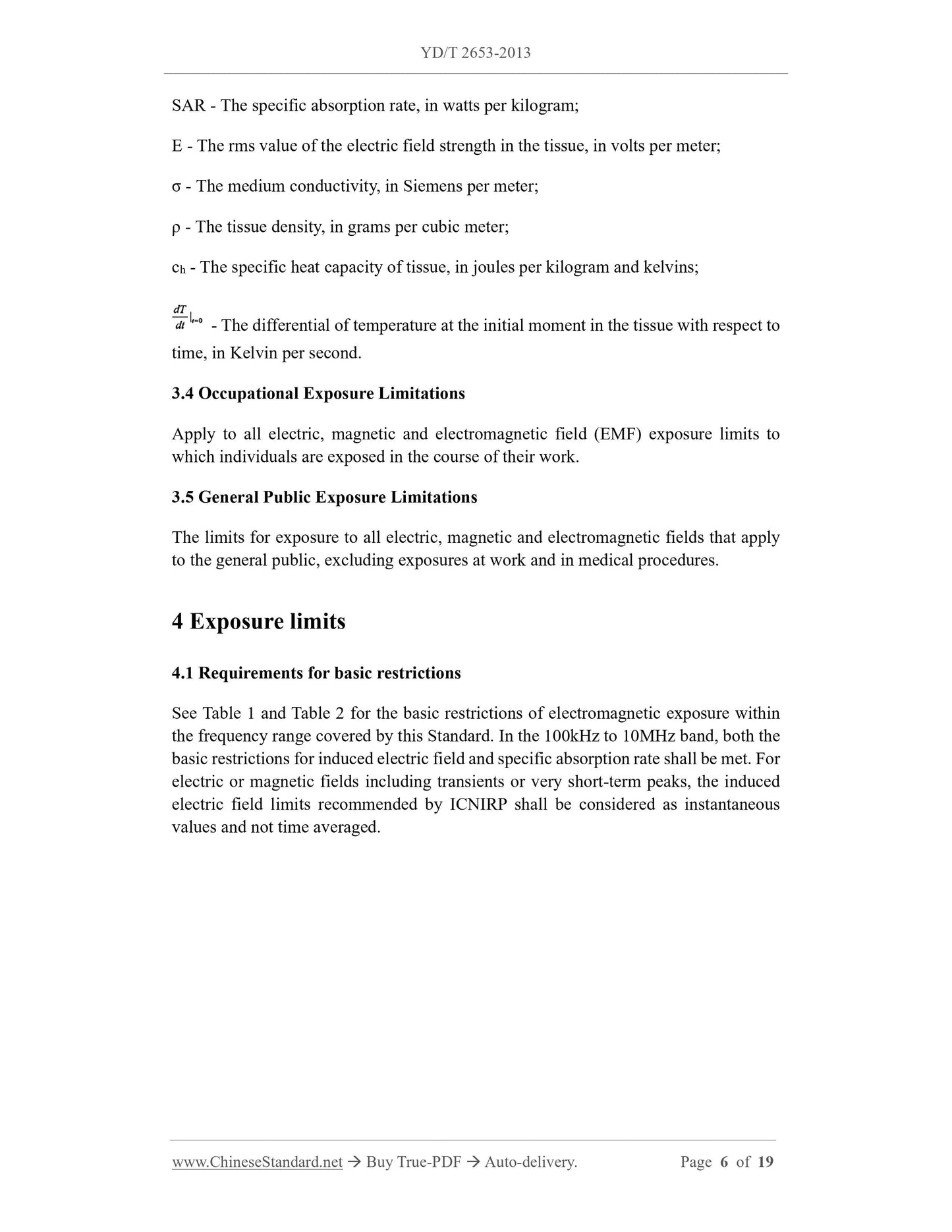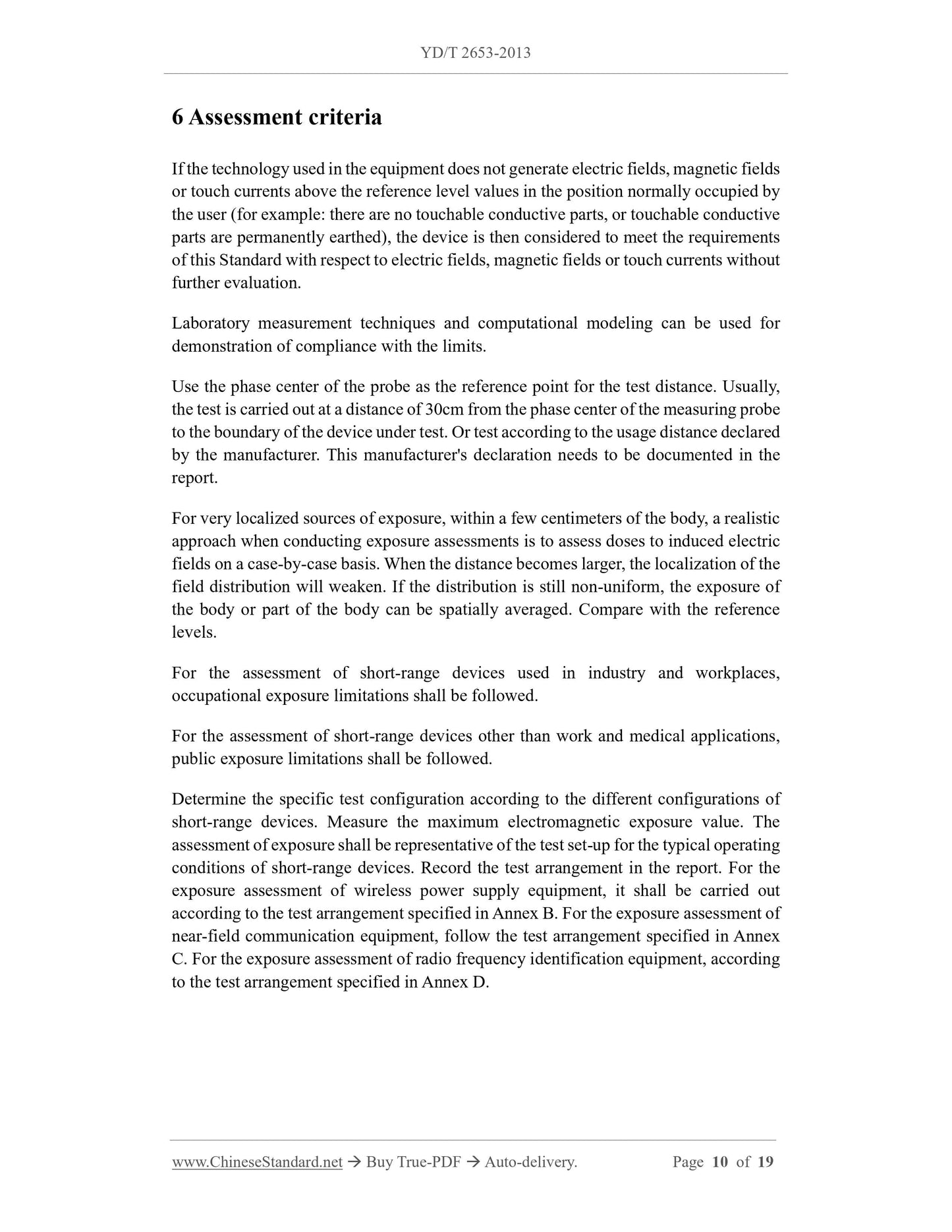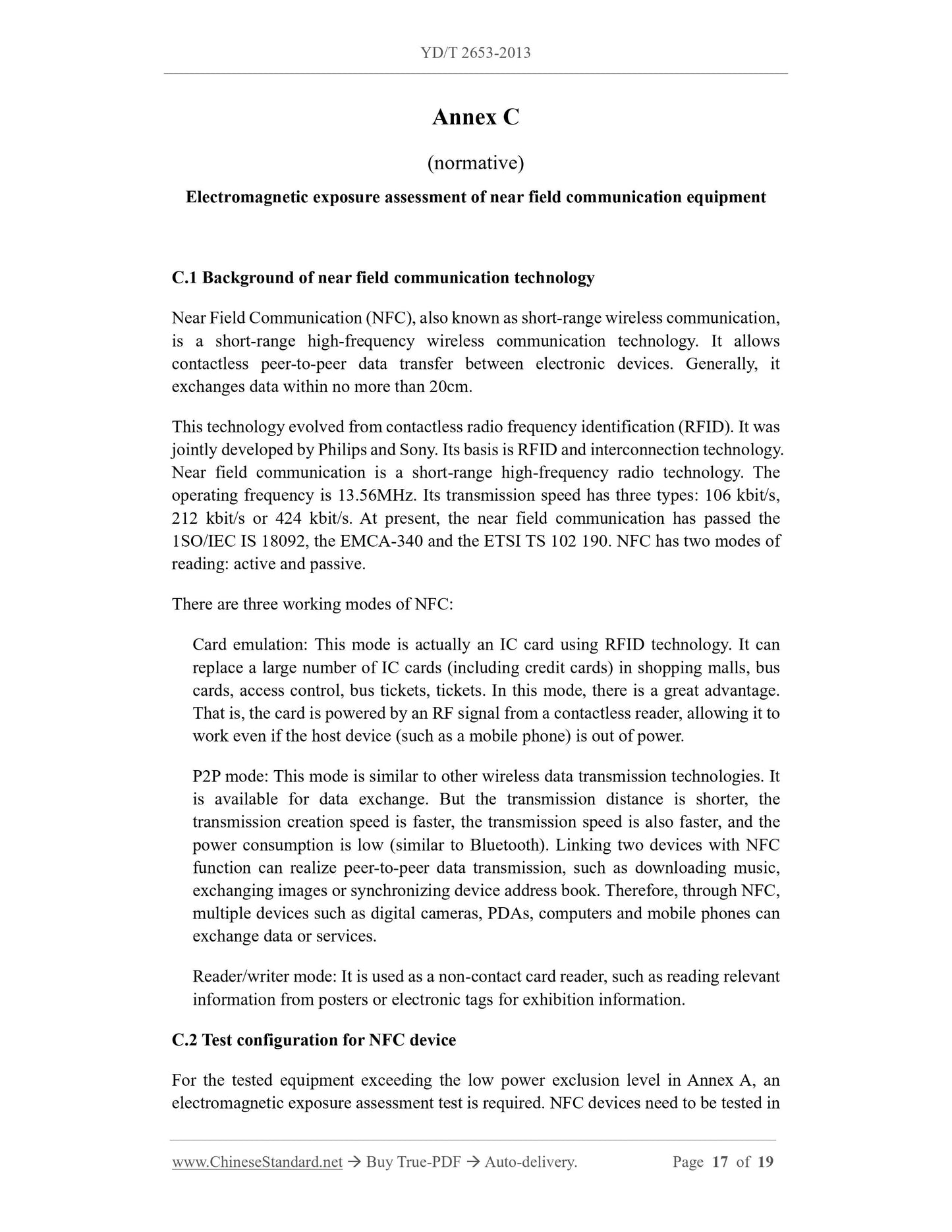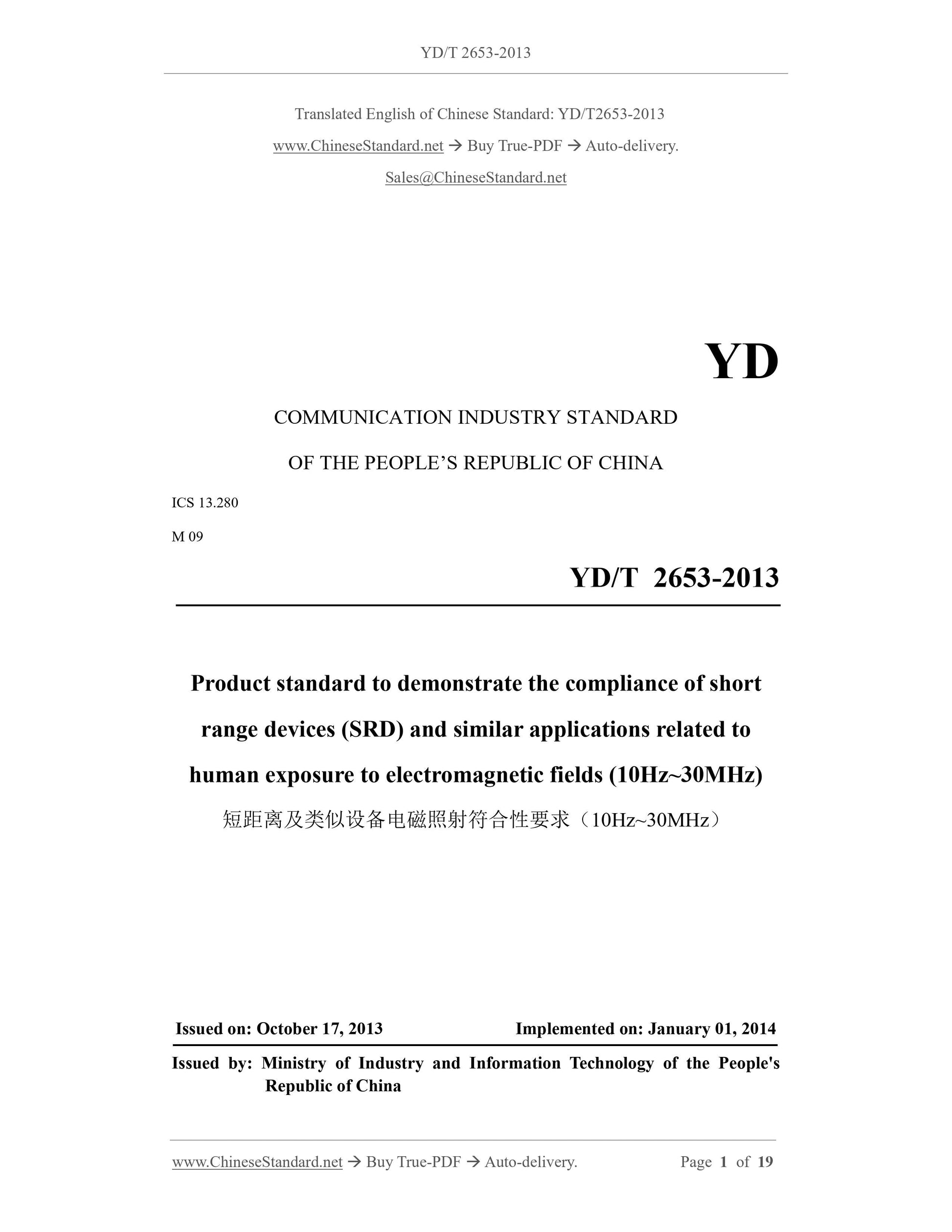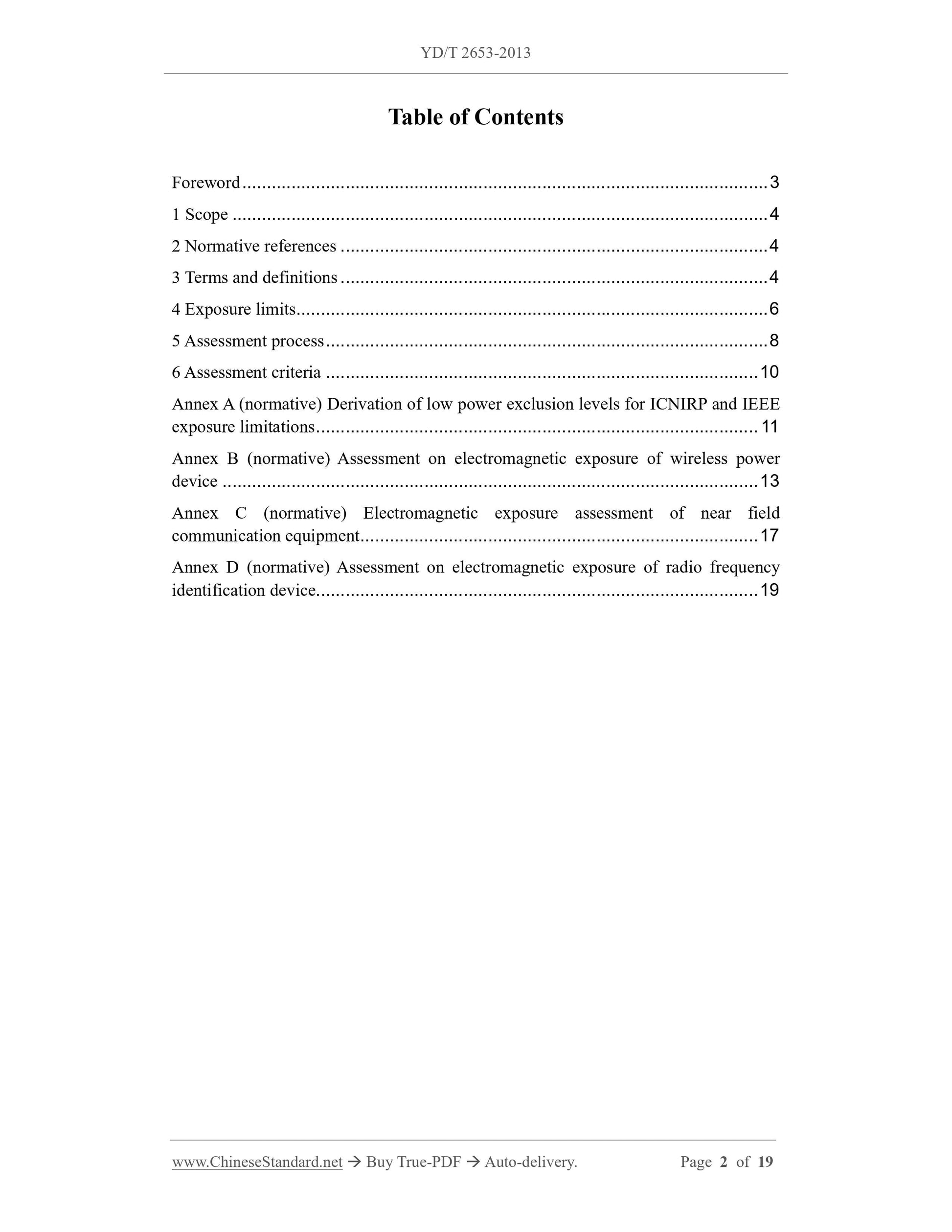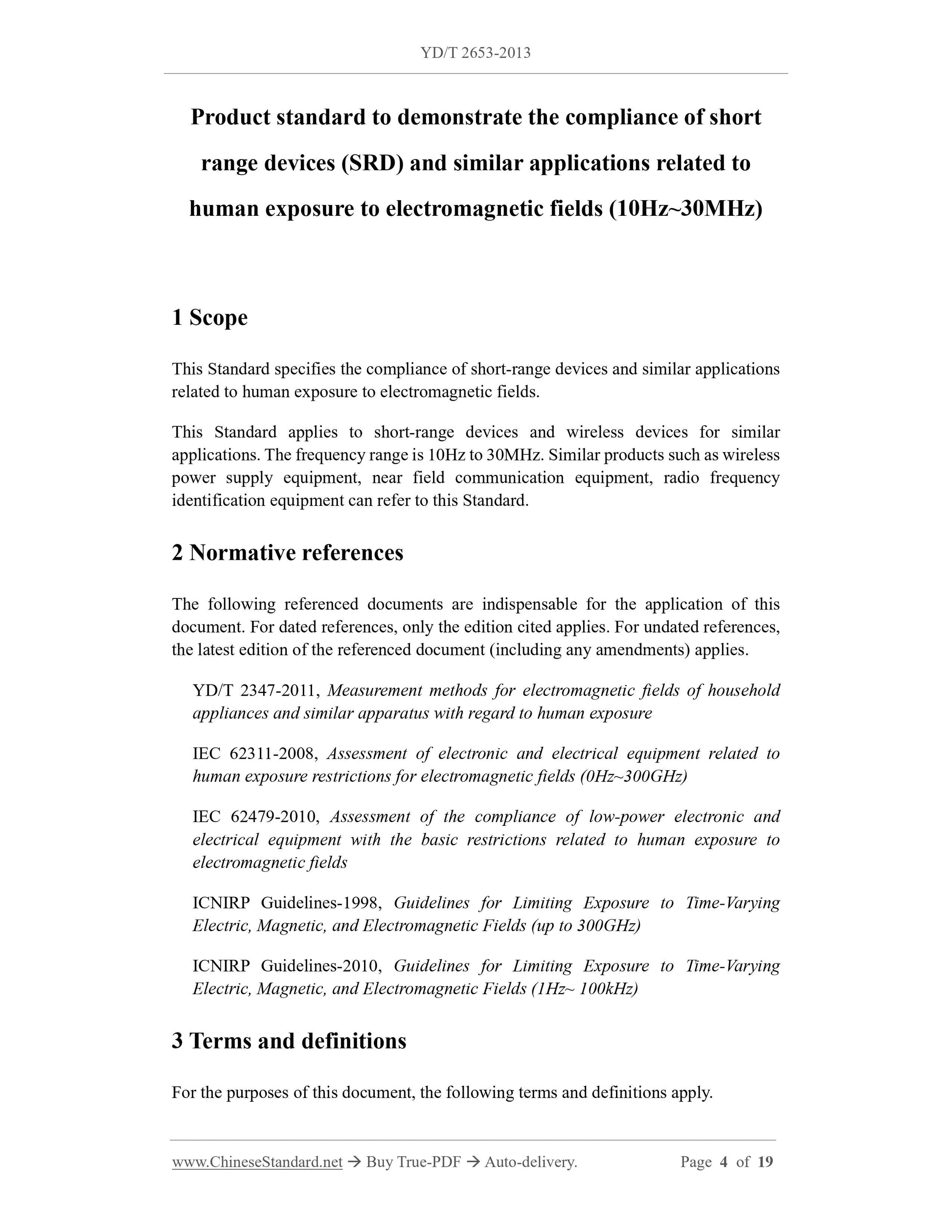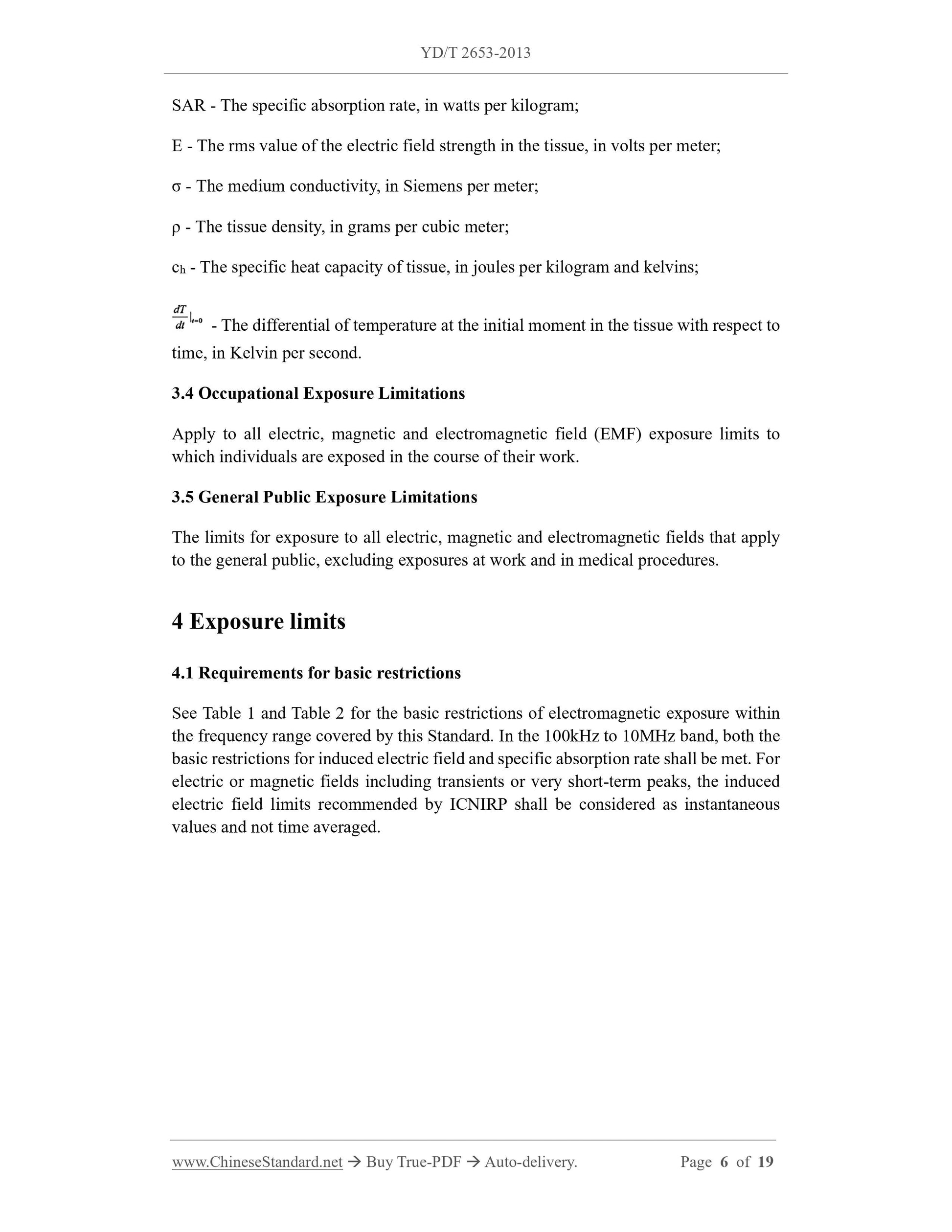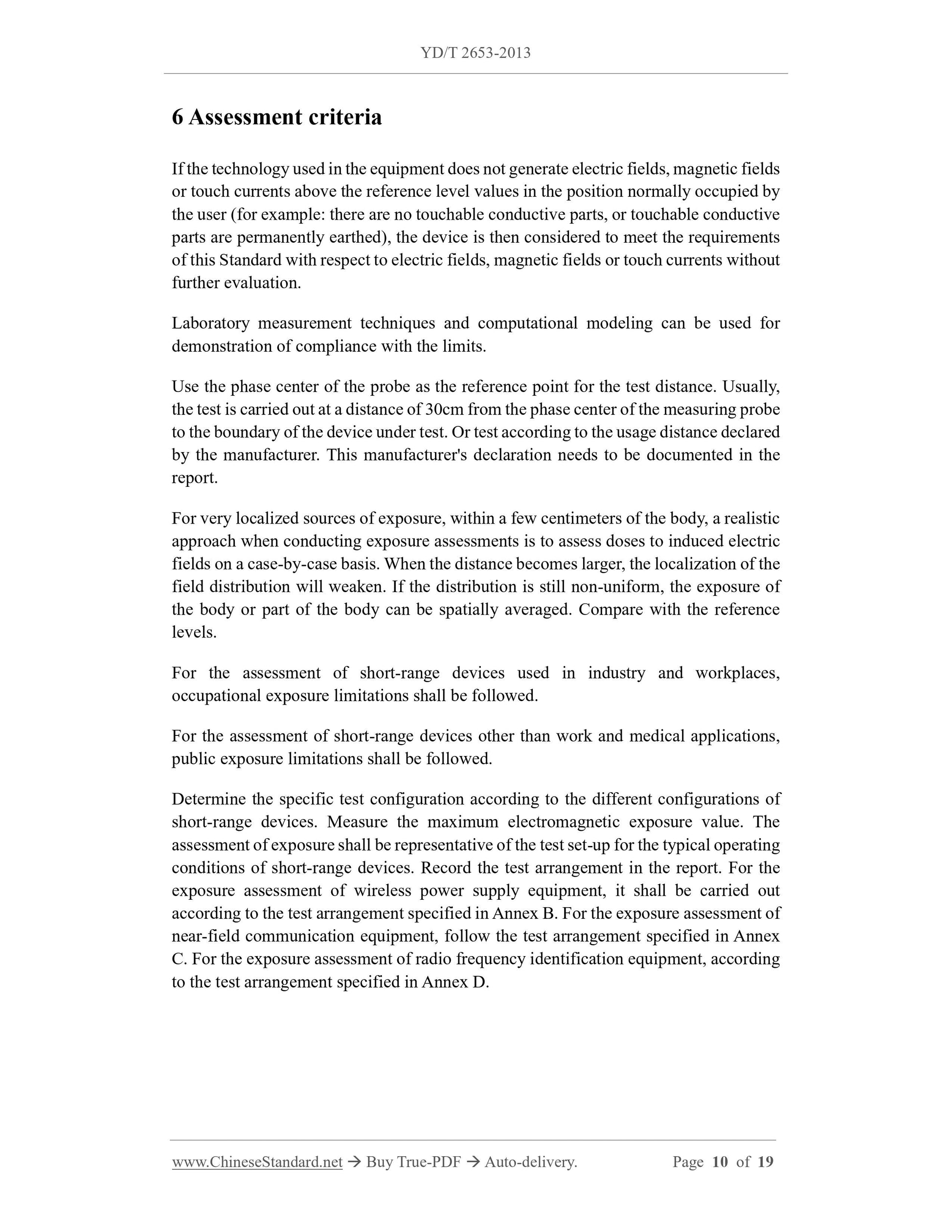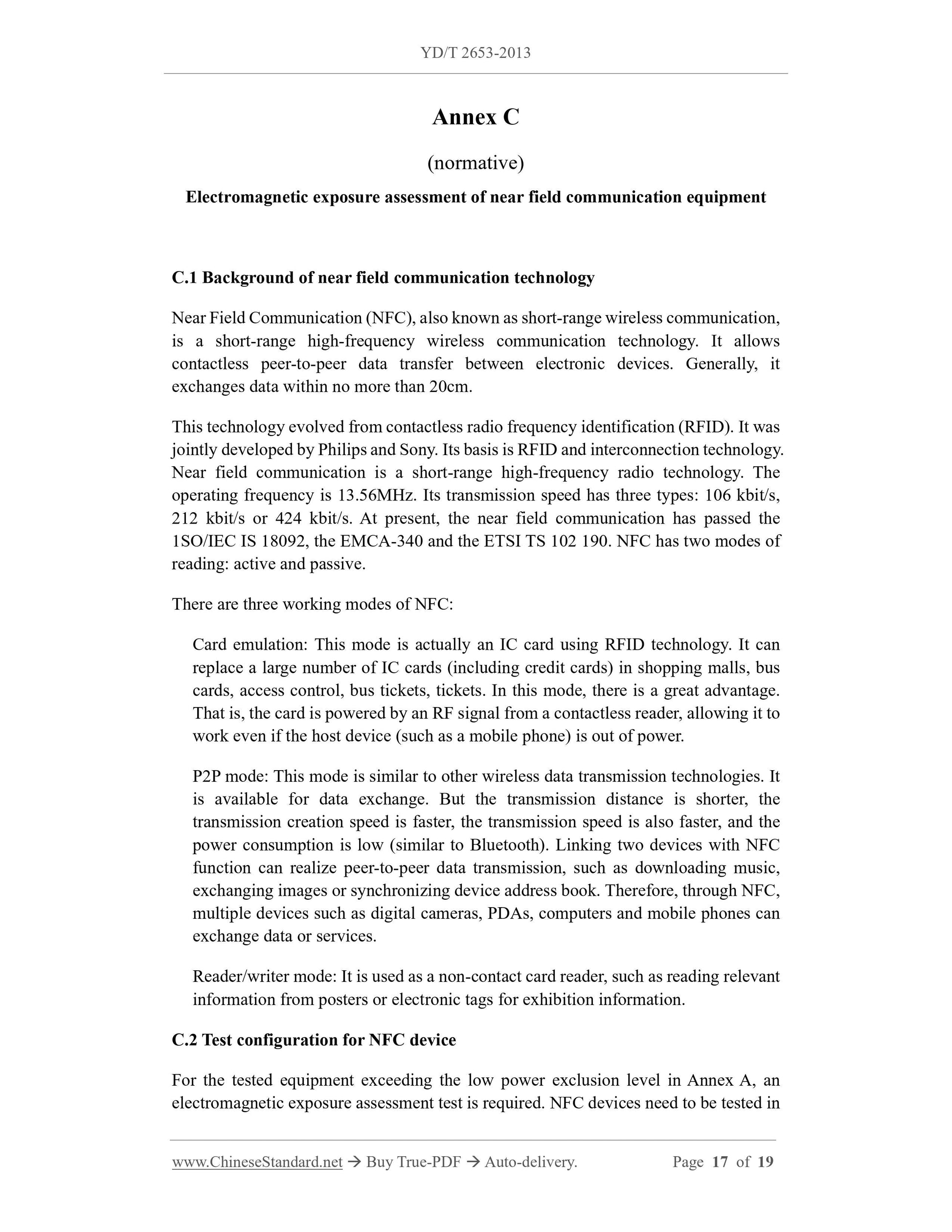1
/
of
6
www.ChineseStandard.us -- Field Test Asia Pte. Ltd.
YD/T 2653-2013 English PDF (YD/T2653-2013)
YD/T 2653-2013 English PDF (YD/T2653-2013)
Regular price
$410.00
Regular price
Sale price
$410.00
Unit price
/
per
Shipping calculated at checkout.
Couldn't load pickup availability
YD/T 2653-2013: Product standard to demonstrate the compliance of short range devices(SRD) and similar applications related to human exposure to electromagnetic fields (1OHz~30MHz)
Delivery: 9 seconds. Download (and Email) true-PDF + Invoice.Get Quotation: Click YD/T 2653-2013 (Self-service in 1-minute)
Newer / historical versions: YD/T 2653-2013
Preview True-PDF
Scope
This Standard specifies the compliance of short-range devices and similar applicationsrelated to human exposure to electromagnetic fields.
This Standard applies to short-range devices and wireless devices for similar
applications. The frequency range is 10Hz to 30MHz. Similar products such as wireless
power supply equipment, near field communication equipment, radio frequency
identification equipment can refer to this Standard.
Basic Data
| Standard ID | YD/T 2653-2013 (YD/T2653-2013) |
| Description (Translated English) | Product standard to demonstrate the compliance of short range devices(SRD) and similar applications related to human exposure to electromagnetic fields (1OHz~30MHz) |
| Sector / Industry | Telecommunication Industry Standard (Recommended) |
| Classification of Chinese Standard | M09 |
| Classification of International Standard | 13.280 |
| Word Count Estimation | 16,131 |
| Quoted Standard | YD/T 2347-2011; IEC 62311-2008; IEC 62479-2010 |
| Regulation (derived from) | Ministry of Industry and Information Technology Bulletin No. 52, 2013; industry standard for filing Notice No. 2 of 2014 (No. 170 overall) |
| Issuing agency(ies) | Ministry of Industry and Information Technology |
| Summary | This standard specifies the requirements for compliance with electromagnetic radiation of short-range devices, and similar equipment. This standard applies to short-range devices and similar applications wireless devices. Frequency range of 10Hz to 30MHz. |
Share
